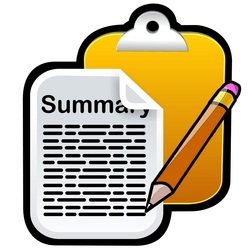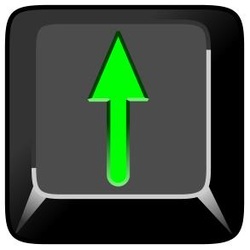1. The Purpose of Communication Books and Boards

Click on your browser back arrow, or the image left, or use the return arrow at the bottom of this page to return to the Main Creating Communication Books and Boards page.
A Communication Board is defined as a no-tech AAC system that permits expressive communication by pointing or looking (or otherwise selecting) at a printed word, symbol, or picture. Until now, such systems did not have spoken or written output. However, with the arrival of the V-Pen system, communication books and boards now can actually speak!
Sarah Blackstone (1993) described the purpose of a communication ‘display’ as being able to:
“arrange language in space so individuals can, by selecting from the available options, say what they wish to say as quickly as possible, and can do so with a minimal amount of effort.”
Blackstone, S. 1993. Thinking a little harder about communication displays.
Augmentative Communication News, 6:1
Not all communication board designs fulfil these criteria. ‘Criteria’ is used here and not the singular form ‘criterion’ because, when this statements is analysed, it reveals, at least, eight distinct components of board design:
- Arrange;
- Language;
- Space;
- Available options;
- Individuals;
- Wish;
- Quickly;
- Minimal effort.
There are actually other components of ‘better’ board design that are not explicit in Blackstone’s statement but, for now, the
statement is a geat place to begin our journey.
Arrange

How are we to arrange the vocabulary we choose to put into any communication system? As a poor filing system in any office inevitably leads to time wasted in locating a specific file when it is needed, so a poor arrangement of vocabulary within a communication system also leads to
greater inefficiencies. At worse, a poor arrangement of vocabulary could lead to the Learner rejecting the system altogether.
Language

Look up language in any dictionary ; for example, http://www.dictionary.com/ defines it thus:
“a body of words and the systems for their use common to a people who are of the same
community or nation, the same geographical area, or the same cultural tradition”
It will not say a collection of nouns. Language is built out of a body of words that when (some of them are) placed together according to the rules of a ‘grammatical system’ take on roles as ‘parts of speech’ to communicate a message with a specific meaning. It is beholden on us to ensure that we provide language and not just words.
“a body of words and the systems for their use common to a people who are of the same
community or nation, the same geographical area, or the same cultural tradition”
It will not say a collection of nouns. Language is built out of a body of words that when (some of them are) placed together according to the rules of a ‘grammatical system’ take on roles as ‘parts of speech’ to communicate a message with a specific meaning. It is beholden on us to ensure that we provide language and not just words.
Space

The size of a system (the space it occupies) has a direct connection to its portability, ease of use, and speed of access. If the communication board/book is too big/heavy, it becomes less than portable; if it is too small the ease of visual and or physical access may be compromised. There is a point, somewhere between the two, that will be a reasonable fit for a particular individual Learner.
Available Options

As it is a seemingly impossible task to put every word (or even just every lemma) into a communication book or board, someone (or some group of people) must make a decision as to what items of vocabulary are displayed in the system and which are rejected. What determines the choice of vocabulary? This is a somewhat complex question that is not best explored at this time but is explored further in these web pages.
Individual

If Ms. Blackstone’s definition had said “...so an individual can...”, it is my opinion that, the definition would have been that little bit more precise. Ideally, a communication system is designed around the specific requirements of an individual Learner. However, we do not live in an ideal world: there are time constraints and workloads that may make such an ideal a rather unattainable goal. Thus, Blackstone’s use of the plural ‘individuals’ may, actually, be the more realistic! Perhaps some designs fit more than one Learner. We must also take into account the requirements of the workforce: if there are a plethora of design factors in any environment then the workforce unlikely to come to terms with their use. If, for example, each communication system used a different symbol set (and there are over 40 AAC sets from which to choose!) then teaching communication would likely be a much more difficult task than, say, if only one was chosen for all systems.
Wish

This is an important point: A communication system must allow an individual Learner to say what s/he wishes to say. This means that the vocabulary selected for inclusion in any system must include the words that the Learner would choose. However, how do we know what words an individual would choose if they cannot tell us? If someone was to say to you right now ...
“The bad news is that you are going to lose your voice for ever but the good news is we are going to create a communication system to compensate for your loss. Please tell me all the words that you want to say.”
...would you really be able to rattle off everything or would you just pass them a dictionary and say, “start with these”!
“The bad news is that you are going to lose your voice for ever but the good news is we are going to create a communication system to compensate for your loss. Please tell me all the words that you want to say.”
...would you really be able to rattle off everything or would you just pass them a dictionary and say, “start with these”!
Quickly

Human beings speak a rate of between 120 – 180 words per minute on average. Some people speak more
slowly and some even more quickly. Typically, Users of AAC systems speak at a much slower rate:
“Word rates that can be achieved with existing technology usually lie in the range 2 - to - 10 words per minute”
Beukelman, D. & Mirenda, P., 1992.
AAC: Management of Severe Communication Disorders in Children & Adults.
New York: Paul Brookes Publishing Co.
When listeners are confronted with anything under half of the standard rate for communication (less than 60 wpm), the situation
may become uncomfortable for them and their typical ‘listener behaviour’ may change:
- They may avoid future conversations with the Learner;
- They may begin to employ various ‘speed-up tactics’ such as guessing the Learner’s intended message before it is complete;
- They may show signs of impatience which, in turn makes the Learner feel uncomfortable. This may result in the Learner
electing not to speak to all but a small specifically selected body of people;
- The conversation may break down entirely.
Ideally, we would like to produce a system that would allow conversation to flow at average rates. This is generally unrealistic; Learner communication rates, when generating spontaneous sentences, are typically well below 60 wpm even with the aid of the best and most
recent technology. Of course, when using pre-stored sentences, communication speed can increase to an average rate. However, write down all the sentences you are ever likely to need to say in just the next month. Even if you could do this, the list is likely to be extremely long and we would have the problem of organising and arranging the sentences in as small a space as possible to effect rapid retrieval
.
Thus, we need to ensure that the design of any communication system promotes the quickest possible retrieval of vocabulary in order to assist the Learner to reach a speech rate that begins to move toward, as far as is possible, the standard.
slowly and some even more quickly. Typically, Users of AAC systems speak at a much slower rate:
“Word rates that can be achieved with existing technology usually lie in the range 2 - to - 10 words per minute”
Beukelman, D. & Mirenda, P., 1992.
AAC: Management of Severe Communication Disorders in Children & Adults.
New York: Paul Brookes Publishing Co.
When listeners are confronted with anything under half of the standard rate for communication (less than 60 wpm), the situation
may become uncomfortable for them and their typical ‘listener behaviour’ may change:
- They may avoid future conversations with the Learner;
- They may begin to employ various ‘speed-up tactics’ such as guessing the Learner’s intended message before it is complete;
- They may show signs of impatience which, in turn makes the Learner feel uncomfortable. This may result in the Learner
electing not to speak to all but a small specifically selected body of people;
- The conversation may break down entirely.
Ideally, we would like to produce a system that would allow conversation to flow at average rates. This is generally unrealistic; Learner communication rates, when generating spontaneous sentences, are typically well below 60 wpm even with the aid of the best and most
recent technology. Of course, when using pre-stored sentences, communication speed can increase to an average rate. However, write down all the sentences you are ever likely to need to say in just the next month. Even if you could do this, the list is likely to be extremely long and we would have the problem of organising and arranging the sentences in as small a space as possible to effect rapid retrieval
.
Thus, we need to ensure that the design of any communication system promotes the quickest possible retrieval of vocabulary in order to assist the Learner to reach a speech rate that begins to move toward, as far as is possible, the standard.
Minimum Effort

It has long been known when:
E > R then M → 0
That is: when the Effort (E) required to communicate a message is greater than the perceived Reward (R) then Learner Motivation (M) tends towards (→) zero (0). In such instances, a Learner may refrain from utilising a given communication system and adopt some other (perceived as easier) approach instead,: for example, eye-pointing to a required item. It is therefore beholden upon us to ensure that any system we design permits communication to take place in as fast and effective a way as possible and the environment is engineered to promote the use of the system and not an alternative to the system.
Within the basic forms of communication boards there are also variations of layout available. The layout will depend primarily on the requirements of the individual board user. This aspect will be covered in more depth in a separate section of this web site.
Summary

All board design methodologies have their strengths and weaknesses. Some will prefer one approach over another for a variety of reasons. However, whatever the board design that is eventually selected, it must be fit for its intended purpose and must meet the criteria as listed above.
Download the Sure Start Sheet for this Page

Click on the download image (left) to download the Sure Start Sheet for this page.
Each Sure Start Sheet is a Microsodt Word document.
It may be freely used for non-commercial purposes.
Back to the Creating Communication Books main page or move to the Top of Page
Click on the Left Arrow below to retrun to the Main Creating Communication Books and Boards Page
or
hit the Up Arrow to return to the top of this page.
or
hit the Up Arrow to return to the top of this page.


